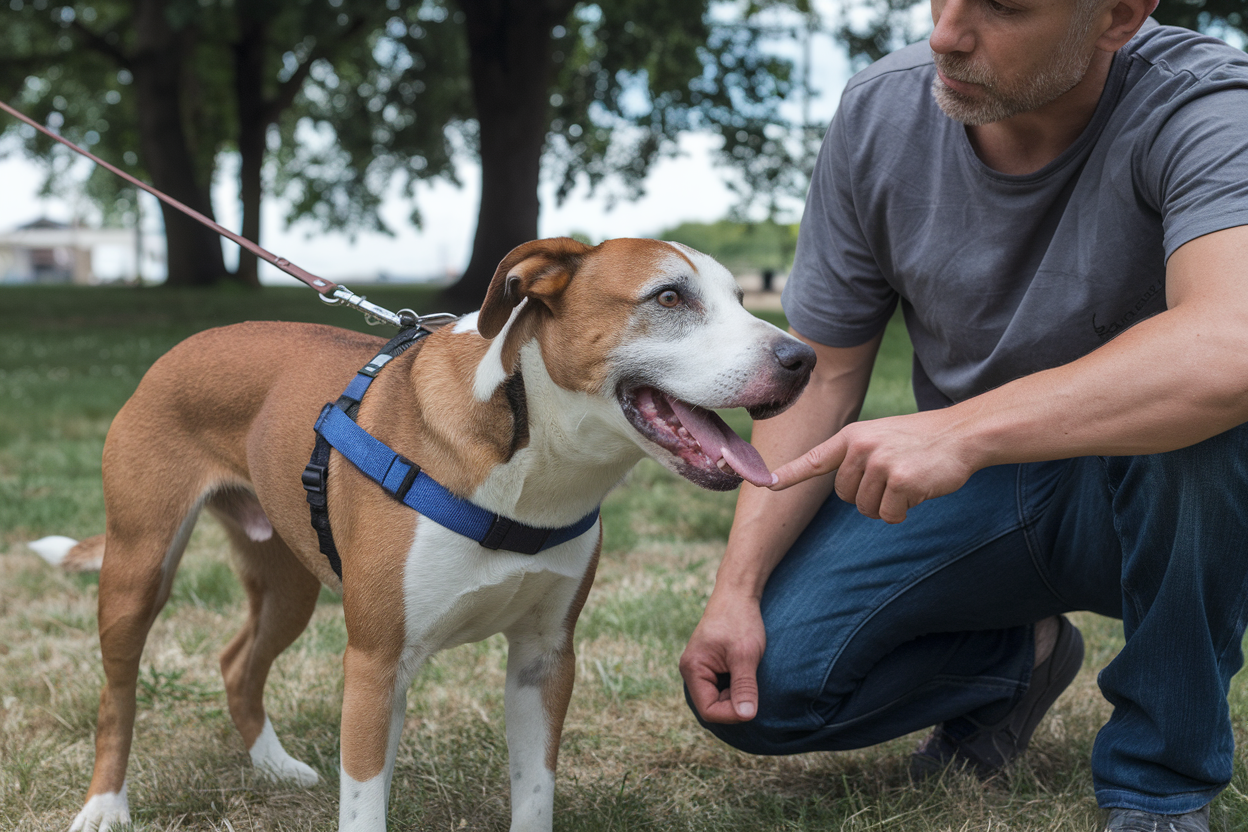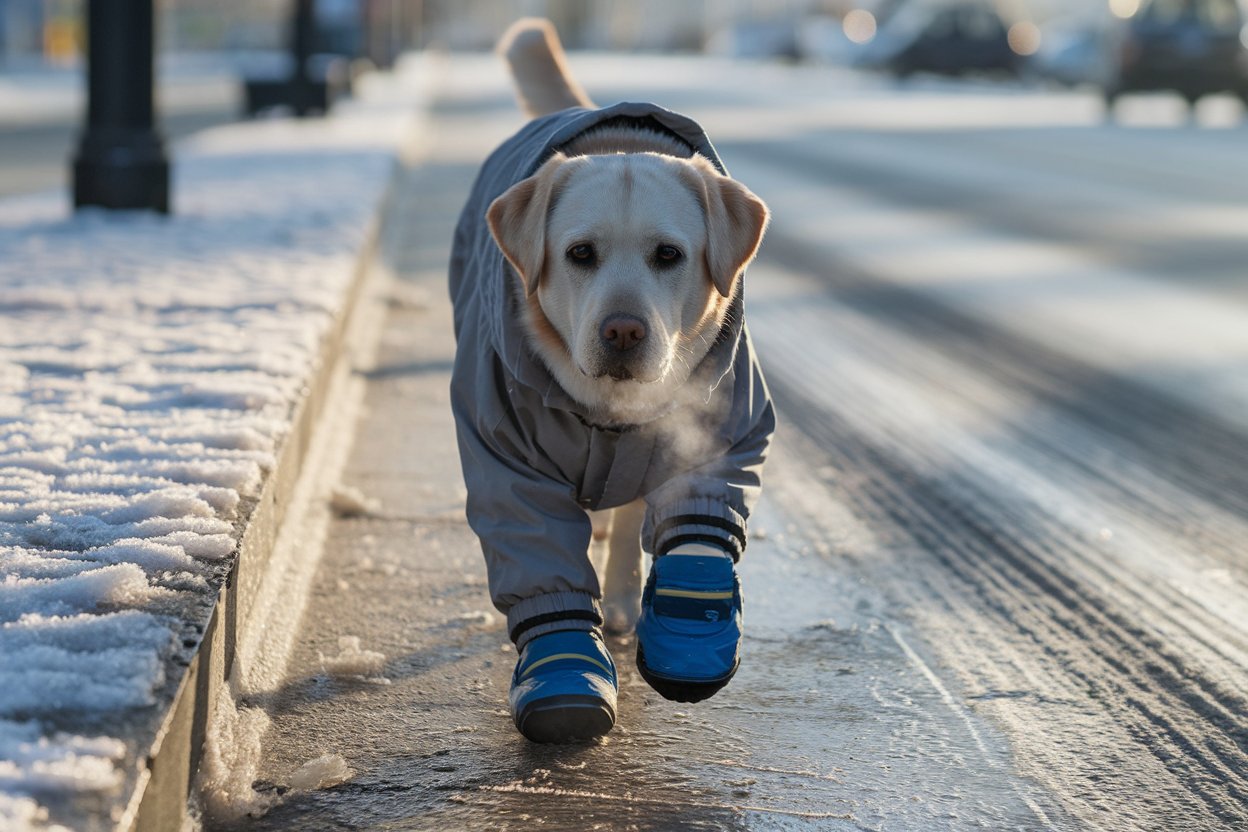
Have you ever struggled to put on a dog harness and wondered if it’s really secure? Many dog owners worry about their pet’s comfort and safety when walking with a harness.
Positioning a dog harness correctly ensures your pet is safe and comfortable while walking. Check the fit around the chest and shoulders, ensuring no pinching or chafing occurs.
Imagine taking your dog on a joyful walk, only to realize the harness is either too tight or slipping off. Let’s uncover the steps to secure a proper fit.
Why Do Dog Trainers Not Like Harnesses?
Dog trainers have their reasons for hesitating to recommend harnesses. But is it about the dog or the human?
Some trainers feel harnesses encourage pulling behavior in dogs, especially without proper training techniques.
Harnesses can give a dog a sense of freedom, but they also require the handler to guide effectively. Let's dive into the pros and cons trainers consider1.
The Debate Around Harnesses
- Pulling Behavior: Certain harness designs can unintentionally encourage pulling.
- Training Complexity: Trainers may prefer collars for better communication during training sessions.
- Comfort for the Dog: Some dogs find harnesses restrictive if not introduced gradually.
| Type of Harness | Key Features | Best for |
|---|---|---|
| Front-clip harness | Reduces pulling | Training, casual walks |
| Back-clip harness | Allows freedom of movement | Small or calm dogs |
What Side Should the Leash Be Attached to a Harness?
Have you ever wondered if there’s a "right" side for leash attachment? The answer depends on your dog and the harness type.
For most harnesses, the leash attaches to the front or back clip. The side doesn’t matter as much as your control over the dog.
Now let’s break this down further to ensure you’re in control during walks.
Leash Attachment Basics
- Front Clip: Ideal for training and managing pulling.
- Back Clip: Better for casual, trained walkers.
- Side Considerations: Right-handed handlers often prefer holding the leash in their dominant hand.
Is It Better to Walk a Dog with a Harness or Collar?
This debate has been ongoing among dog owners and trainers alike. Which is truly better for your pup?
Harnesses are better for dogs prone to neck injuries or respiratory issues. Collars offer simplicity and are often better for well-trained dogs.
Your decision may depend on your dog’s behavior, health, and your walking habits.
Harness vs. Collar Showdown
| Factor | Harness | Collar |
|---|---|---|
| Comfort | Distributes pressure evenly | Can strain the neck |
| Safety | Prevents choking or injury | Risky for pulling dogs |
| Training | Easier for pulling control | Better for subtle corrections |
Why Should You Not Use a Harness on a Dog?
Harnesses aren’t perfect. While they have clear benefits, they might not work for every dog.
Harnesses may not suit dogs with medical issues or behavioral tendencies that conflict with their design.
Let’s explore situations where harnesses might cause more harm than good.
Situations to Avoid Using a Harness
- Behavioral Issues: Strong pullers may worsen without training.
- Medical Concerns: Harnesses can rub against sensitive areas.
- Mismatched Fit: Improperly fitted harnesses can lead to discomfort.
Do Slip Leads Stop Pulling?
If you’ve been frustrated with pulling, you might have considered a slip lead as a solution.
Slip leads can help reduce pulling when used with proper training, but they are not a quick fix.
Let’s examine how this tool compares to others for leash training.
The Slip Lead in Action
- Pros: Tightens gently when the dog pulls, signaling them to stop.
- Cons: Requires careful use to avoid injury.
- Alternative Tools: Consider front-clip harnesses or martingale collars for similar control.
What Is the Correct Position for a Dog Harness?
Positioning a harness might seem simple, but small mistakes2 can lead to big problems for your pup.
The correct harness position sits snugly around the chest and shoulders, with straps lying flat against the body.
Take these steps to achieve the ideal fit every time.
Steps to Positioning a Harness
- Measure Your Dog: Use a soft tape measure for the chest and neck.
- Adjust the Straps: Ensure the harness isn’t too tight or too loose.
- Check for Comfort: Look for signs of discomfort, like rubbing or reluctance to move.
Conclusion
Dog harnesses offer safety and control when used correctly. But their effectiveness depends on the right fit, type, and training approach.











